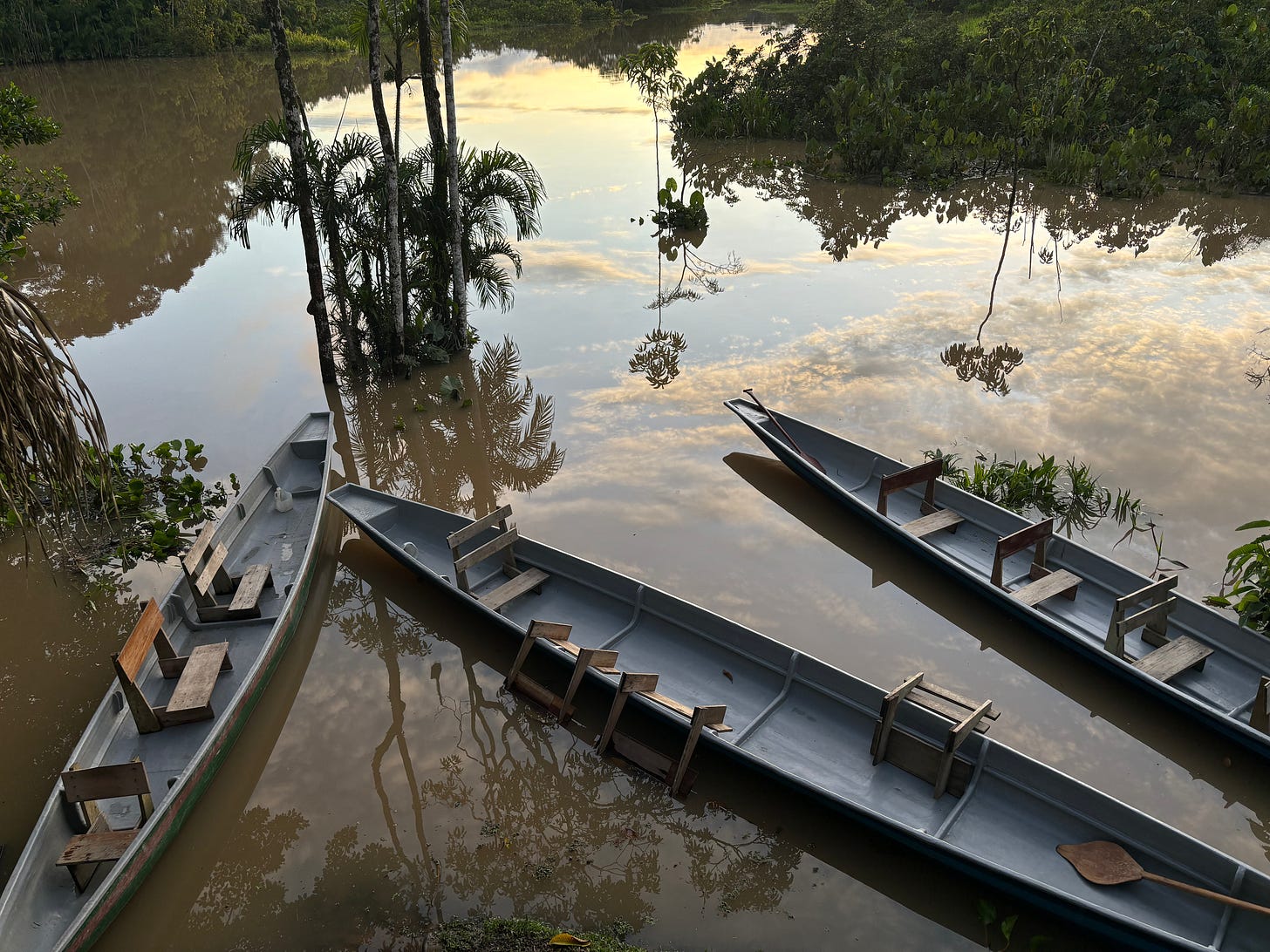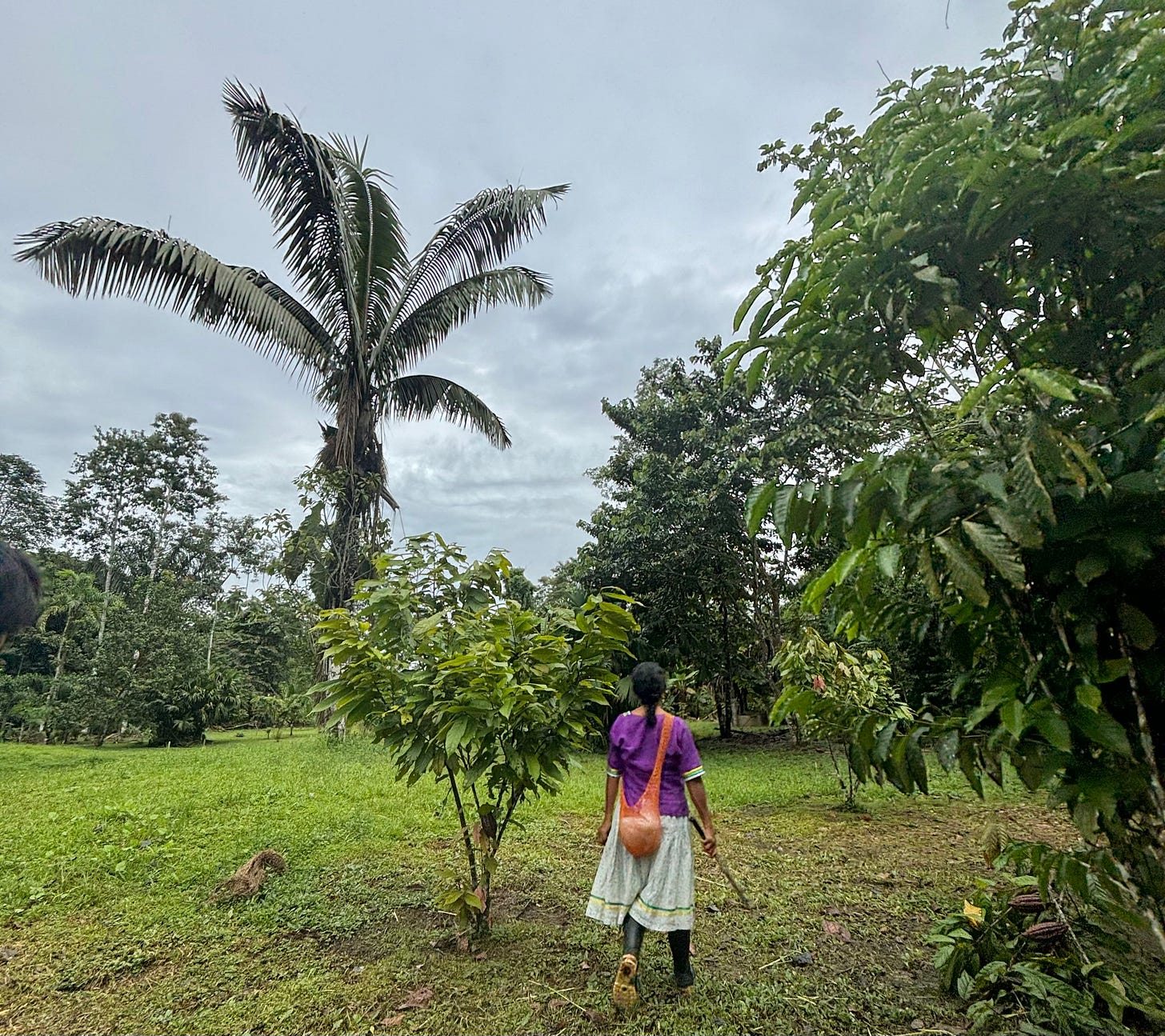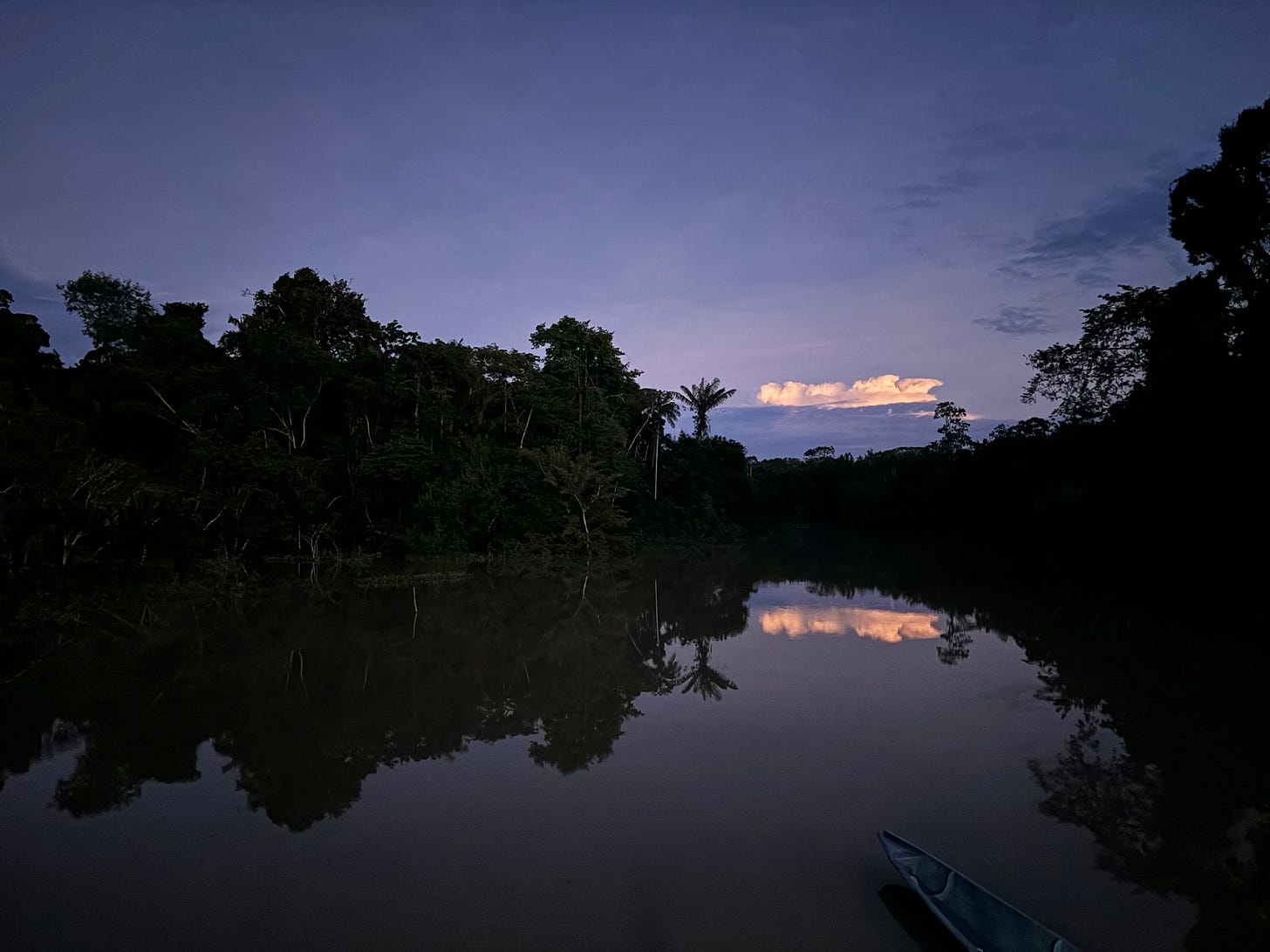I am laying in the hammock outside the room N and I share. The windows are just a layer of mesh separating the outdoors from where we rest. This design adds to the general feeling I’ve been getting in the ecuadorian amazon, which is that above any roof, it’s the Forest that is our home and we are just another living thing coexisting among millions of other living things.
There have been several downpours and flooding in the rivers for the past few days, so much so the locals say they haven’t seen this much rain since last year. But the sky is clear now, and I’m grateful the breeze disintegrates some of the hot humid air from the morning. There’s a wonderful view from the hammock of the squirrel monkeys in the trees across the water. We are transfixed watching them play and create a ruckus leaping between branches, the thinnest of which bounces up and down and up and down like a see-saw against their weights.
The people here live a very different life than the one my friends and I come from - it’s one a lot less materialistic and a lot more spiritual. We go on early morning canoe rides and night hikes, and in between we fit in bird-watching, star-gazing, reading or just talking and playing cards. I feel healthier in the way each breath is full and fresh and my skin is never not hydrated. Life is simple when we break it down to just what we’re made of and all we really need.
At dinner N had asked “What would it be like to be from the rainforest? Would we be happier?” We debated the topic but ultimately found it difficult to hypothesize an alternate world where we grow up here, because the people who do rarely leave. Still, I think there’s a lot to learn and appreciate from this way of living we’ve been fortunate enough to experience temporarily, our few days enriched by the stories Raúl relays about the indigenous people. Here are some of the notes I’ve collected from the jungle.
The sani warmi women
Two days ago we visited the property of the sani warmi women’s organization, where we prepared a traditional meal and toured the fields where the women plant and harvest crops and medicinal plants. In the hut, two small children were enveloped each in a rocking hammock; a little girl peered curiously over the fabric before calling to her mother. One of the women came out from the kitchen area, skirt swishing, walking barefoot on the earth. She shushed the child and gave the hammock a forceful push then pull which initiated a rocking and caused the child to dip once again into the folds of the hammock.
There are 22 women in the group, all married. Raúl tells us that expectations for women in the community are changing, but very slowly, and the average age range for Kichwa women to get married and have kids is still around 20 years old. The youngest woman in the group is 18. They spoke to us softly, in Kichwa mixed with a bit of Spanish.
While we were waiting for the food to cook, we browsed the collection of handmade crafts the women had displayed, purchasing a few woven bracelets and beaded keychains as souvenirs.
“The forest is alive” pt 1
I feel it in the heaviness of the atmosphere carrying soon-to-form droplets, inundated by the sounds of millions of creatures calling, and in the knowledge of the unknown always present but invisible from our gazes.
We spend hours on a kapok treetop, 20+ stories high, waiting and watching for life. Raúl teaches us to listen to the sounds of animals to identify them before even seeing them. Mainly we catch sight of several species of birds through telescope. We also learn that it was Paúl’s father who had first climbed up the tree with his bare hands (no harness) and identified it as a good place to build the treehouse observation tower.
“The forest is alive” pt 2
The swamps in the jungle get flooded often which changes the landscape and forces the locals to adapt to ever-changing trails and river channels. Locals carry a machete on walks to clear blockages and sometimes create new paths entirely. It can be inconvenient, forcing us to wade through waist-deep water on one of our hikes, but the flooding carries nutrient-filled sediments from the Napo river to the banks, enriching the soil and helping the forest thrive. When the water recedes, there is a distinct lining on the plants where the water levels were a few days ago, tracing all the way downstream, with the area that was submerged coated a lighter color.
The universe is beneath the canopy
We have this conception of afterlife set among the clouds, in heaven or at least some alternate realm over earth. Raúl chuckles at how we romanticize the stars, chasing darkness to find them at night. He says that here, “the universe is from the canopy and down”, and when people die, their spirit goes to the trees. And so life and death are interlaced in the forest, and aside from living animals and vegetation, the forest is imbued with the spirits of those who lived before. Thus it makes sense later to learn that in the Kichwa culture, diseases and healing are linked to the spiritual world as well.
Shamans are chosen in each community to be that link, gifted with the power to heal and communicate with the spirits. They rely on ayahuasca, a psychoactive brew, to travel along the vine (waska) to speak to the spirits (aya), and diagnose and cure illnesses. In each Kichwa community, the next shaman is typically chosen among a son or nephew of the current shaman, and he goes through an extensive training process to learn the proper healing techniques and ayahuasca dosages.
More ounces:
recently discovered yana (criminally underrated)





"Life is simple when we break it down to just what we’re made of and all we really need."
this is everything!!
miss you and loved getting to relive the ecuadorian amazon through your eyes